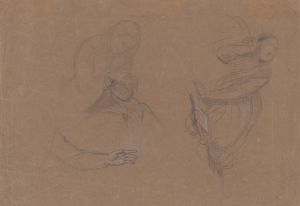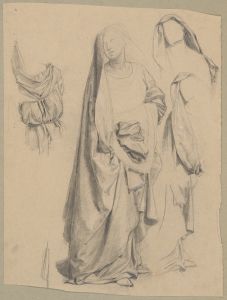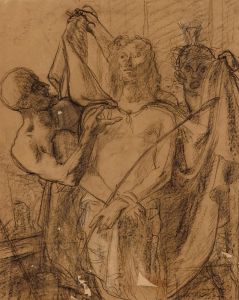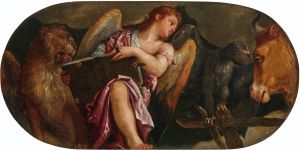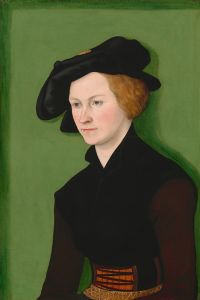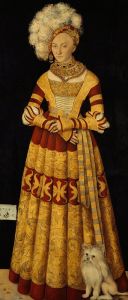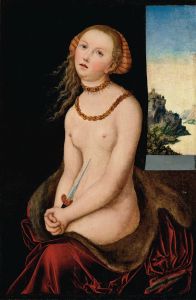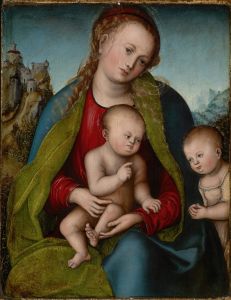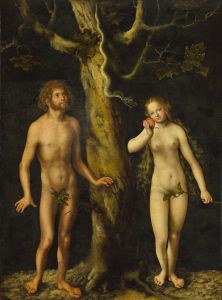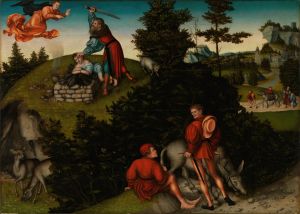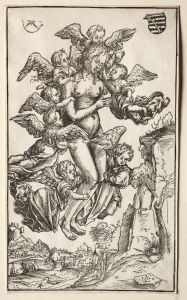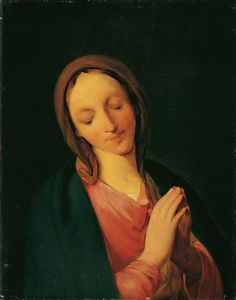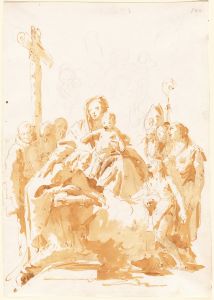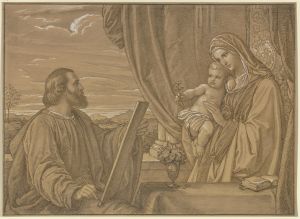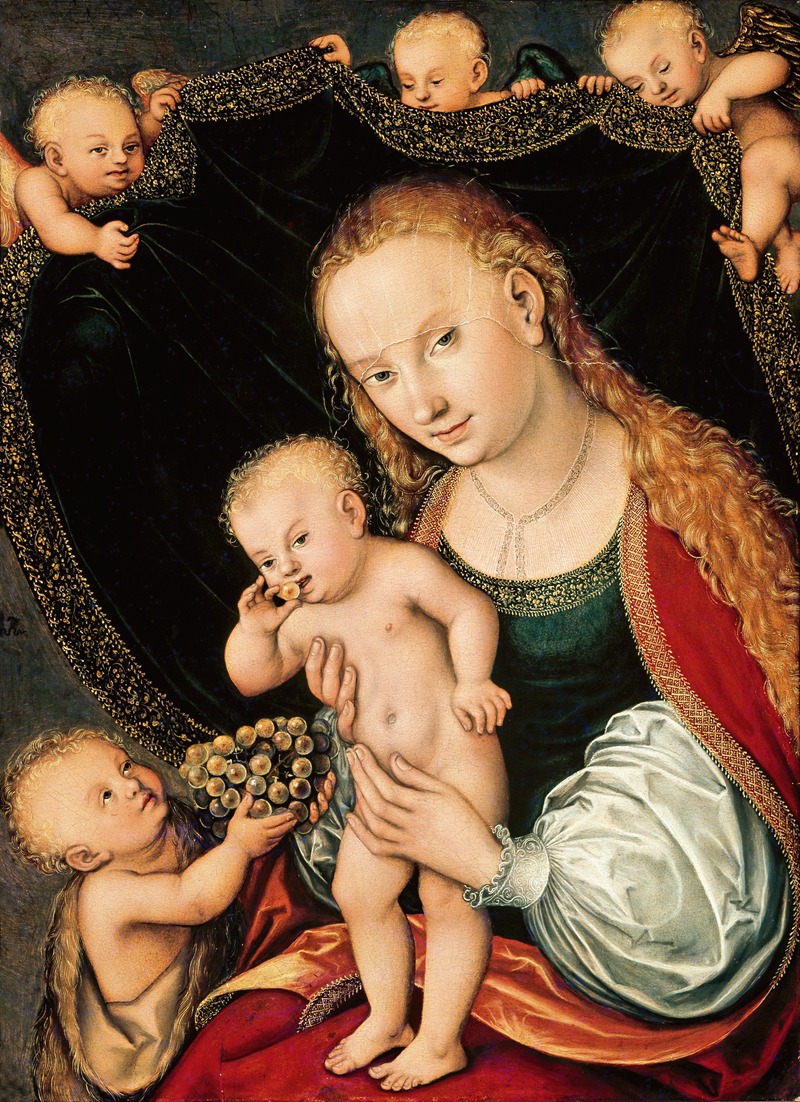
Madonna and Child with the Young St John the Baptist
A hand-painted replica of Lucas Cranach the Elder’s masterpiece Madonna and Child with the Young St John the Baptist, meticulously crafted by professional artists to capture the true essence of the original. Each piece is created with museum-quality canvas and rare mineral pigments, carefully painted by experienced artists with delicate brushstrokes and rich, layered colors to perfectly recreate the texture of the original artwork. Unlike machine-printed reproductions, this hand-painted version brings the painting to life, infused with the artist’s emotions and skill in every stroke. Whether for personal collection or home decoration, it instantly elevates the artistic atmosphere of any space.
Lucas Cranach the Elder, a prominent German Renaissance painter, created numerous works that reflect his mastery of religious and allegorical themes. Among his notable paintings is Madonna and Child with the Young St. John the Baptist. This artwork exemplifies Cranach's characteristic style, which combines delicate figures, vibrant colors, and a serene yet intimate portrayal of religious subjects.
The painting depicts the Virgin Mary holding the Christ Child, accompanied by the young St. John the Baptist. The figures are arranged in a harmonious composition, with Mary seated and cradling the infant Jesus, while St. John, identifiable by his traditional attributes, stands nearby. The interaction between the figures conveys a sense of tenderness and spiritual connection, a hallmark of Cranach's religious works. The Christ Child is often shown in a playful or affectionate pose, emphasizing his humanity, while St. John the Baptist, as a child, is depicted with a sense of devotion and reverence.
Cranach's treatment of the subject reflects the influence of both Northern Renaissance traditions and Italian Renaissance ideals. His attention to detail, particularly in the rendering of textures such as fabric and skin, demonstrates his technical skill. At the same time, the composition's simplicity and the emotional resonance of the figures highlight his ability to convey profound religious themes in an accessible and relatable manner.
The background of the painting, as seen in many of Cranach's works, often includes a landscape or architectural elements that provide depth and context to the scene. These settings are typically idealized and serve to enhance the spiritual atmosphere of the composition. The use of light and color further underscores the divine nature of the subjects, with soft illumination highlighting the central figures.
Lucas Cranach the Elder was a court painter to the Electors of Saxony and a close associate of Martin Luther, the leader of the Protestant Reformation. While Cranach is known for his Protestant-themed works, he also produced numerous Catholic devotional images, including depictions of the Madonna and Child. This duality in his oeuvre reflects the complex religious landscape of 16th-century Europe.
The exact date of creation for Madonna and Child with the Young St. John the Baptist is not definitively known, as Cranach and his workshop produced multiple versions of similar themes. However, the painting is generally attributed to the early to mid-16th century, during the height of Cranach's career. Today, various versions of this subject attributed to Cranach and his workshop are housed in museums and private collections worldwide.
This work is a testament to Cranach's ability to blend devotional imagery with artistic innovation, making it a significant example of Northern Renaissance art.





